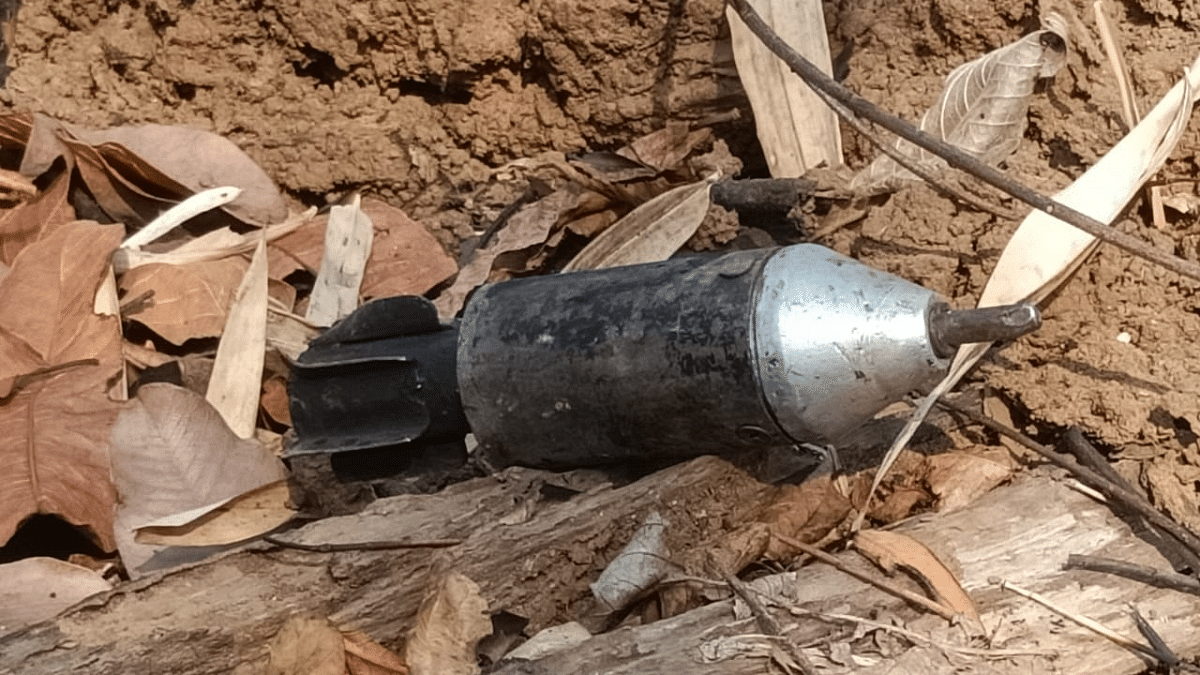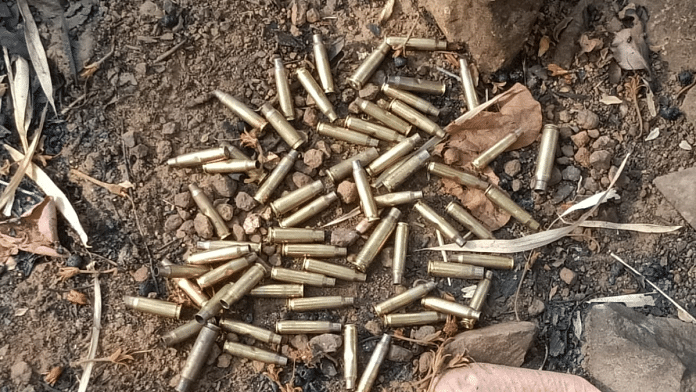Kanker: For nearly 200 security personnel who had climbed up the hills Monday night in the middle of dense Abujmarh forest, used food plates dumped carelessly gave the cue that they were on the right track in their hot pursuit of Maoists leaders in Chhattisgarh’s Bastar region.
That hint followed by an updated and precise intelligence led to one of the biggest successes for the security forces in the battle against Left-Wing Extremism in the country as well as in Chhattisgarh.
Operation Hapatola, which lasted 24 hours right from the positioning of over 200 personnel on the hills and their withdrawal after the action, accounted for 29 members of the banned outfit Communist Party of India (Maoists).
Sources in the security agencies told ThePrint that the action was planned only after multiple intelligence inputs confirmed the presence of top Maoist leaders in the dense forest between Hapatola village on the Kanker side and Binagunda village on the Narayanpur side.
This is also that time of the year when the Maoists step up activities as villagers collect tendu leaves.
Officers involved in the planning of the operation told ThePrint that by Monday afternoon, a decision was taken and approved by Kanker Senior Superintendent of Police (SSP) Indira Kalyan Elesela to launch a “sudden and multi-pronged” assault on the Maoists.
“The decision was an urgent one because of the intelligence that senior cadres of the Maoist outfit were present in the area,” SSP Elesela told ThePrint.
Security personnel, who were part of the operation, told ThePrint that they started trekking around 9 PM on 15 April from the Chhotebetiya company operating base (COB) and crossed the Kotri river that separates Chhotabethiya area from the forest. The river runs dry in the summer, allowing people to move either side of it.

“The site where the exchange of fire took place was approximately 11 km from Chhotebetiya COB,” an officer told ThePrint.
By Saturday evening, the Chhattisgarh Police identified all of 29 Maoists killed including Shankar Rao, who as per officers in security establishment, headed the intelligence of the North Bastar divisional committee of the Maoist outfit, his wife Rajita, and area committee member Lalita.
Others identified had bounties ranging from Rs 3 lakh to Rs 5 lakh on their heads.
Also Read: School dropout with ‘weakness for money’ — who was Maoist Shankar Rao, killed in Bastar operation
Constant chatter
This area of Abujmarh forest between Kanker and Narayanpur, where encounter took place, comes under the jurisdiction of the Anti Naxal Operations unit of the Border Security Force (BSF), and the District Reserve Guards (DRGs) and the Bastar Fighters of Chhattisgarh Police.
Officers privy to the intelligence inputs told ThePrint that there were continuous inputs about the movement of the top Maoists in the region over the last 30 days.
“There were inputs, one after another from multiple sources, about the gathering of nearly 60-70 Maoist cadres, but the exact operation was not being executed because there were continuous movements of their leaders. Hence, zeroing in was paramount before launching the operations,” a source in the security establishment told ThePrint.
Officers also pointed out that both human and electronic intelligence were challenged by each other and the decision to conduct operations was taken after they matched, following which the Kanker SSP approved the plan of action Monday afternoon.
As soon as the plan was given a green signal, nearly 200 personnel comprising Bastar Fighters, DRGs and nearly 20 from the BSF commando platoon moved swiftly towards the forest.
As soon as they crossed the river, Maoist sympathisers burst crackers to raise alarm, but the security personnel were not deterred by such “overused tactics”. The men were divided in different groups and given different courses to reach the nearby site where Maoists were suspected to be hiding.
“We had specific intelligence about the presence of nearly 35 Maoists in the channel between Hapatola and Binagunda. This is a season of tendu leaf collection when Maoists come to villages in forests to influence villagers and recruit,” a source in the security establishment told ThePrint.
“To our good fortune, our men spotted used food plates made up of leaves. The search operation continued, but darkness and thick vegetation made the process slow.”
In the meantime, the team received another precise intelligence that they moved approximately three km towards the Narayanpur side of the forest and the operation was narrowed down with increased intensity.
The security personnel spotted their targets at Paralkot reserve forest, but their movement on dry leaves in the forest alerted the Maoists who opened fire. The exchange of fire began at around 1.30 PM Tuesday and carried on till nearly 6 PM, and troops told ThePrint that they could see “Maoists falling on the ground after taking hits.”
Another senior police officer told ThePrint that out of the 29 killed Tuesday, 19 were wearing full uniform while nine were in half uniform (T-shirt) and the remaining one was carrying the uniform in a bag.
Also Read: Chhattisgarh Maoists’ den breached for first time — how the Abujmarh operation was executed
Learning from mistakes
Officers privy to development in Kanker district police told ThePrint that a failure in another such operation in the same forest region had given valuable inputs. Similarly, as recently as in January, another operation, Surya Shakti, was conducted in January by the combined forces.
“One security personnel succumbed to bullet injury leading to demoralisation and the mission did not yield the arrest of Shankar Rao,” an officer told ThePrint, regarding the botched operation.
Subsequently, there was a continuous mock drill in the region and the troops were made aware of the different routes they could take to catch their opponent napping.
By virtue of the rounds of simulation exercise, the officers told ThePrint, the team was well versed with the necessary tactical adjustments they needed to make in their operation.

“The exercise resulted in Maoists unable to catch up with the relentless firing and also not getting leeway to run away. However, some of them managed to flee possibly at the time when bullets hit troops,” an officer privy to the planning of the operations said.
BSF Inspector Ramesh Chandra Chaudhary got hit on his right leg in the exchange of gunfire. Two more security personnel were injured in the operation.
‘Withdrawal was delicate’
Officers said that the encounter was a Herculean achievement because there was no casualty on the security forces’ side. Once the gunfight stopped, the “most delicate” task of withdrawal of the security personnel from the middle of the forest with the bodies of Maoists began.
Evacuation and withdrawal were also meticulously planned as several reports of similar operations highlighted the increased chances of retaliatory ambushes, they said.
Within two hours of the exchange of fire, the first relief team led by Additional Superintendent of Police, Pakhanjur, Prashant Shukla and Town Inspector of the nearest police station Jeetendra Gupta had reached within 500 m of the site of the encounter.
By evening, the injured troops, including BSF’s Chaudhary, were airlifted to Raipur. The security personnel returned by 9 PM, completing their mission in 24 hours.
“The encounter has nearly wiped out the Partapur area committee and it would be difficult to revive with severely diminished strength. However, as we do with extremist outfits and their organisations, we shall not take our eyes off them,” a senior officer told ThePrint.
(Edited by Tony Rai)
Also Read: NIA raids put focus on Maoism in UP. How Red tide rose until 2-pronged strategy brought it down



